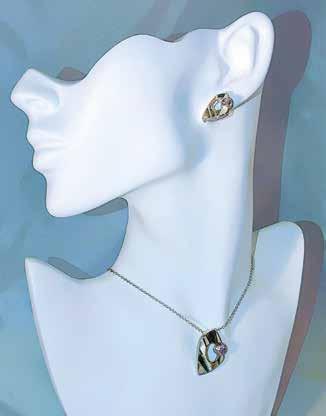
1 minute read
WEAR AMasterpiece

As a child and teenager, Condella watched meteorologist Harry Volkman broadcasting on television from Chicago. Volkman provided a positive impact on Condella’s growing interest in meteorology, becoming an influential person for him. “Harry had a way of explaining the weather that was educational and fascinating,” Condella recalled. “I became one of his volunteer weather watchers and would write letters to him. He always wrote back.”
Condella remembered another influential person in his early life, a meteorologist for American Airlines stationed at Chicago’s O’Hare International Airport. “He was a member of our parish in Lombard. He would bring home weather maps and explain to me what they meant and how the weather affected the airline flights across the country,” Condella said.
Years later, as an adult, Condella’s early connection to meteorologist Harry Volkman resurfaced at a pivotal highlight in his own career as a meteorologist. Condella’s childhood book from his parents, Your Guide to the Weather: An Introduction to Meteorology, bore a special inscription from his mother: “Son, may we see you on TV some day replacing Harry Volkman.” Condella recalled, “Much later in my life, in 2002, when I received Broadcast Meteorologist of the Year from the American Meteorological Society, Harry Volkman was in attendance, and he autographed the book for me. It was an amazing full circle moment.”
Throughout his career as a well-known television meteorologist, Vince Condella adapted to changes in technology that impacted his work forecasting the weather. His early career involved more hands-on visual art techniques to present weather maps, while later in his career, new technological tools were widely used. He described the changes in this way: “I began my broadcast meteorology career in Madison in 1980 just at the beginning of computer-generated graphics. So I was doing a combination of hand-drawn maps using colored pencils and pens as well as drawing them on the computer. Computer graphics, 3-D satellite images, etc. grew exponentially throughout my career. Also, the numerical predication models that are used to predict future atmospheric conditions have also improved tremendously, and that has led to a huge increase in forecasting accuracy.”
During Condella’s time broadcasting at Channel 6, he typically worked from 1:30 p.m. to 10:45 p.m. Toward the end of his career, he provided weather report segments for the 4:00, 5:00, 6:00, 9:00 and 10:00 p.m. newscasts. “I did my own forecasting,” Condella recalled,










